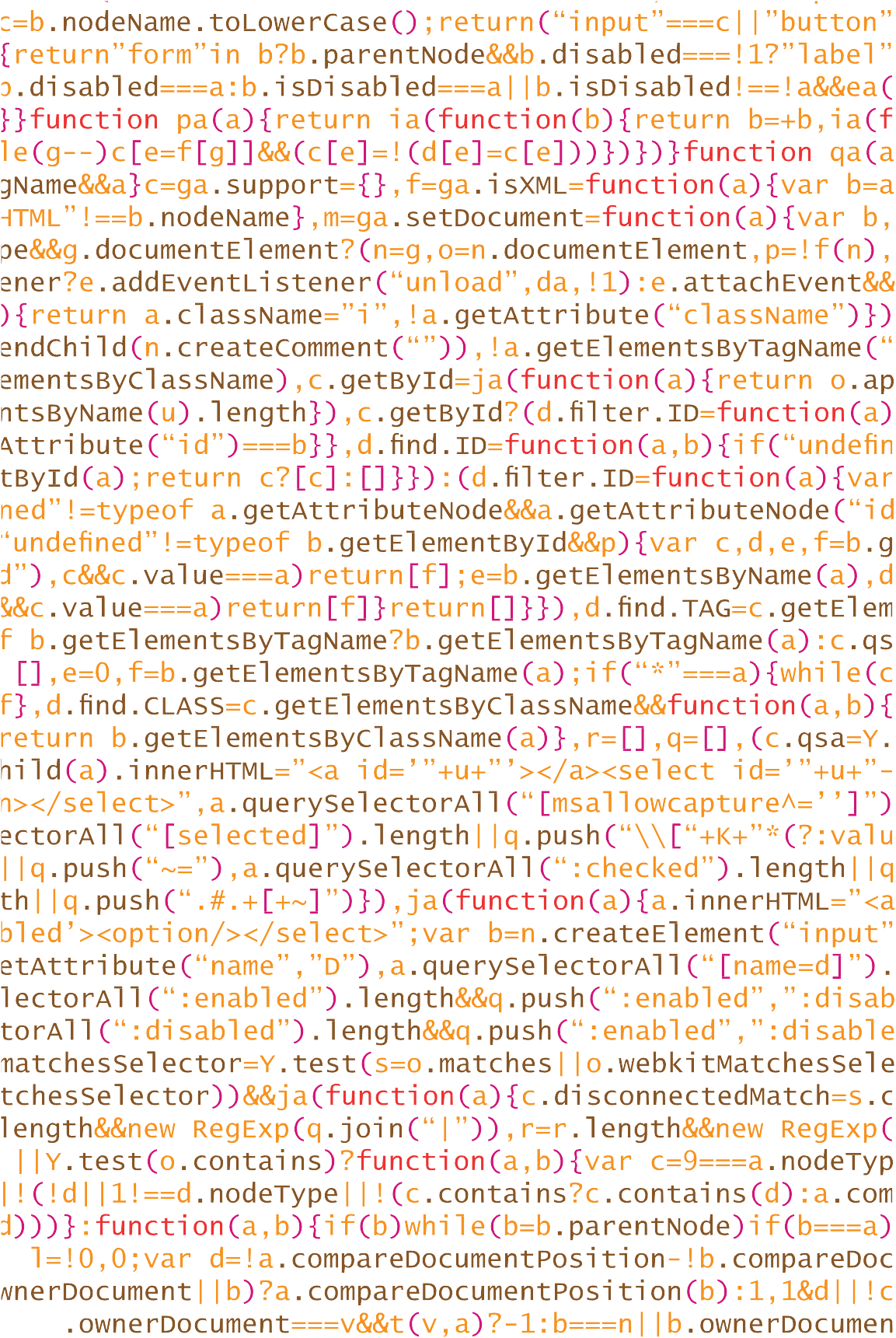Derek Miller - The Power of JavaScript
Here you can read online Derek Miller - The Power of JavaScript full text of the book (entire story) in english for free. Download pdf and epub, get meaning, cover and reviews about this ebook. year: 2018, publisher: Cavendish Square Publishing, LLC, genre: Computer. Description of the work, (preface) as well as reviews are available. Best literature library LitArk.com created for fans of good reading and offers a wide selection of genres:
Romance novel
Science fiction
Adventure
Detective
Science
History
Home and family
Prose
Art
Politics
Computer
Non-fiction
Religion
Business
Children
Humor
Choose a favorite category and find really read worthwhile books. Enjoy immersion in the world of imagination, feel the emotions of the characters or learn something new for yourself, make an fascinating discovery.
- Book:The Power of JavaScript
- Author:
- Publisher:Cavendish Square Publishing, LLC
- Genre:
- Year:2018
- Rating:3 / 5
- Favourites:Add to favourites
- Your mark:
- 60
- 1
- 2
- 3
- 4
- 5
The Power of JavaScript: summary, description and annotation
We offer to read an annotation, description, summary or preface (depends on what the author of the book "The Power of JavaScript" wrote himself). If you haven't found the necessary information about the book — write in the comments, we will try to find it.
The Power of JavaScript — read online for free the complete book (whole text) full work
Below is the text of the book, divided by pages. System saving the place of the last page read, allows you to conveniently read the book "The Power of JavaScript" online for free, without having to search again every time where you left off. Put a bookmark, and you can go to the page where you finished reading at any time.
Font size:
Interval:
Bookmark:


Published in 2018 by Cavendish Square Publishing, LLC
243 5th Avenue, Suite 136, New York, NY 10016
Copyright 2018 by Cavendish Square Publishing, LLC
First Edition
No part of this publication may be reproduced, stored in a retrieval system, or transmitted in any form or by any meanselectronic, mechanical, photocopying, recording, or otherwisewithout the prior permission of the copyright owner. Request for permission should be addressed to Permissions, Cavendish Square Publishing, 243 5th Avenue,
Suite 136, New York, NY 10016. Tel (877) 980-4450; fax (877) 980-4454.
Website: cavendishsq.com
This publication represents the opinions and views of the author based on his or her personal experience, knowledge, and research. The information in this book serves as a general guide only. The author and publisher have used their best efforts in preparing this book and disclaim liability rising directly or indirectly from the use and application of this book.
All websites were available and accurate when this book was sent to press.
Library of Congress Cataloging-in-Publication Data
Names: Miller, Derek.
Title: The power of JavaScript / Derek Miller.
Description: New York : Cavendish Square Publishing, 2018. | Series: The power of coding | Includes bibliographical references and index.
Identifiers: ISBN 9781502634160 (pbk.) |ISBN 9781502629449 (library bound) | ISBN 9781502629456 (ebook)
Subjects: LCSH: JavaScript (Computer program language)--Juvenile literature. | HTML (Document markup language)--Juvenile literature. | Internet programming-Juvenile literature. | Web sites--Authoring programs--Juvenile literature.
Classification: LCC QA76.73.J39 2018 | DDC 005.2/762--dc23
Editorial Director: David McNamara Editor: Caitlyn Miller Copy Editor: Rebecca Rohan Associate Art Director: Amy Greenan Designer: Joe Parenteau Production Coordinator: Karol Szymczuk Photo Research: J8 Media
The photographs in this book are used by permission and through the courtesy of: Cover baranq/ Shutterstock.com; p. 4 SkillUp/Shutterstock.com; p. 8 Paolo Bona/Shutterstock.com; p. 9 Netscape Communications Corp./Wikimedia Commons/File:Netscape icon 2007.svg/CC PD; p. 12 Darcy Padilla/Wikimedia Commons/File:Brendan Eich Mozilla Foundation official photo.jpg/CC BY-SA 3.0; p. 16 Birger Eriksson/Wikimedia Commons/File:DOM-model.svg/CC BY-SA 3.0; p. 22 Carl Berkeley/Wikimedia Commons/File:iPhone First Generation 8GB (3680455198).jpg/CC BY-SA 2.0; p. 28 catwalker/Shutterstock.com; p. 30 Daewoo/Wikimedia Commons/File:Ncsa30.jpg/CC BY-SA 3.0; p. 38 Diego sarmentero/Wikimedia Commons/File:Ninja-ide-screenshot.png/CC BY-SA 3.0; p. 40 Pluke/Wikimedia Commons/File:CPT-Hashing-Password-Hashed.svg/CC BY-SA 1.0; p. 43 Arambar/ Wikimedia Commons/File:Map by Aram Bartholl, part of the show From Here On during Rencontres Arles, France 2011.jpg/CC BY-SA 4.0; p. 45 Gmail Developers/Wikimedia Commons/File:Gmail 4 Inbox.png/CC BY-SA 4.0; p. 48 vectorsector/Shutterstock.com; p. 52 Alexey Boldin/Shutterstock. com; p. 56 Efa/Wikimedia Commons/File:Mobile OS market share from IDC till 2016 Q3.png/CC BY-SA 4.0; p. 60 Fraywing/Wikimedia Commons/File:Meanstack-624x250.jpg/CC BY-SA 3.0; p. 65 jQuery/Wikimedia Commons/File:Logo jQuery.svg/CC PD; p. 66 I Like Acid3/Wikimedia Commons/ File:IE5.5 (Right) And Firefox 21 (Left) Rendering Commons.PNG/CC BY-SA 3.0; p. 74 izusek/ iStock; p. 79 Matthew Yohe/Wikimedia Commons/File:Steve Jobs Headshot 2010-CROP.jpg/CC BY-SA 3.0; p. 81, 89 United States Census Bureau; p. 83 Doc Searls/Flickr/CC BY-SA 3.0; p. 87 M4OS Photos/Alamy Stock Photos; p. 93 Samykolon/Wikimedia Commons/File:Firemen im Silicon Valley. jpg/CC BY-SA 3.0; p. 99 360b/Shutterstock.com; p. 100 DB Apple/picture-alliance/dap/Newscom.
Printed in the United States of America


Opposite: JavaScript is written using letters, numbers, punctuation marks, and special characters .

J avaScript is the most widely used programming language in the world. It is an essential component of most websitesa fact that has earned it the nickname the language of the web. It is also used to develop applications (apps) for phones and other devices. Despite its high profile, JavaScript was designed and created in just ten days by one person: Brendan Eich. Although he did not know it at the time, his creation would revolutionize the way that people use the internet and make web pages. Since its creation in 1995, JavaScript has been an integral part of web development. Millions of programmers use JavaScript to do their jobs and develop the programs that shape our lives. But before we look at the important ways that JavaScript is used today, lets look at its fascinating history in the early years on the internet.
In 1995, the internet was still in its infancy. The World Wide Web had just been made available to the public in 1991, and it was still quite slow and tedious to use. Internet browsersused to view web pageswere still rudimentary and had long load times. To open a new web page generally took at least thirty seconds, if not more, on the telephone-line modems people used to access the internet. Because of this, filling out forms on the internet (for instance, to open a new email account), was a painstaking process. If you forgot to fill in a field, you would have to wait while your computer sent a request to the server. The server would then send a response back pointing out the error. In this way, even the most basic online tasks became tiresome because of the need for your computer to communicate over the slow internet to accomplish anything.
JavaScript was created to remedy this issue. It enabled web pages to check to see if every required field was filled in before sending a request to the server. This meant that if users left a field blank, they could be informed before the lengthy communication between their computer (also known as the client) and the server began.
JavaScript became the first popular client-side programming language. Its widespread adoption marked a fundamental shift in internet history. Tasks could now be accomplished both client-side and server-side with ease. The functions of JavaScript quickly grew, and it was soon used for many things other than simply checking forms and other basic tasks. It allowed websites to become more interactive and paved the way for the modern landscape of the internet.
The history of JavaScript is bound up with the so-called browser war, a competition between Microsoft and Netscape to become the dominant web browser supplier to the world. Netscape was the early dominant force in the fledgling web browser market. It released its first browser in 1994 and rapidly took a majority of the browser market. It seemed poised to become the unquestioned leader of the industry.
However, in 1995, Microsoft responded. Already a tech giant due to the popularity of Microsoft Windows, Microsofts founder Bill Gates intended to take over the browser market as well. The company launched Internet Explorer, a new browser, to compete with Netscape Navigator. It began including the software for free with Windows, the operating system that came with nearly all computers at the time.
Font size:
Interval:
Bookmark:
Similar books «The Power of JavaScript»
Look at similar books to The Power of JavaScript. We have selected literature similar in name and meaning in the hope of providing readers with more options to find new, interesting, not yet read works.
Discussion, reviews of the book The Power of JavaScript and just readers' own opinions. Leave your comments, write what you think about the work, its meaning or the main characters. Specify what exactly you liked and what you didn't like, and why you think so.













